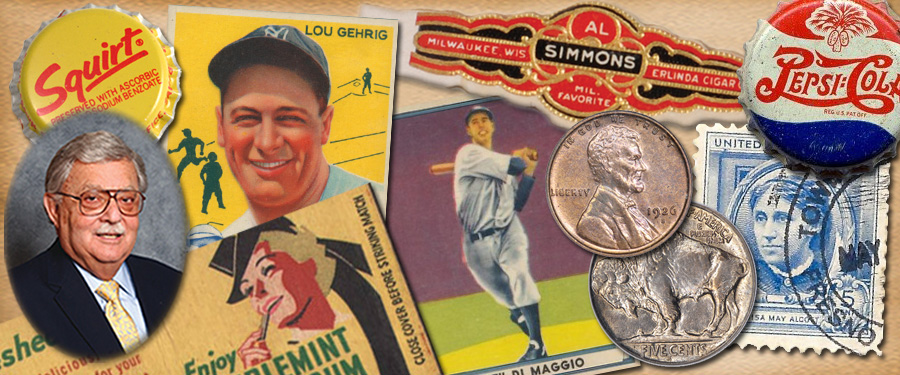
As the recession started to loosen up, and money became a bit easier to come by for some, we kids and teenagers had a few extra pennies in our pockets. I had a paper route to sell the Saturday Evening Post and made a few extra cents that I could contribute to my family’ earnings. If we were lucky, received an allowance each week, which helped pay for our lunch in school (less than 15 cents a day), bus rides costing 25 cents a week, and if we had anything left we could use it for a pretzel or soda, or a Saturday afternoon movie (10 cents admission). It was hard to save a penny. As my family earned a few dollars more each week, allowances were increased, or we made a few additional cents delivering newspaper or magazines.
Baseball was a major topic of interest for me and my friends (as well as for many other kids then and now). We could buy bubble gum packed with baseball cards that featured a player and his playing history. I lived in the Bronx, a borough of New York City, and a relatively short walk from Yankee Stadium, the famous home of the New York Yankees. Across the Harlem River from the Stadium was the Polo Grounds, the home field of the New York Giants. If I was willing to take a 5-cent ride on the subway, I could go to Brooklyn and visit Ebbets Field, the home of the Brooklyn Dodgers. So with all this baseball close by and with the newspapers filled with baseball stories our desire to collect baseball cards was completely understandable.
So whenever I could, I went to the corner candy store, which sold these packages of cards and gum and accumulated as many as I could afford. My friends would do the same thing and then we would trade to get the ones we didn’t have. We also gambled for cards! We would toss a card against a wall and have it stand up! The more you stood up against an opponent the more you won! We also flipped cards on to the sidewalk and tried to match our opponent’s toss. The more you matched, "heads or tails" the more you won.
After a while we had shoeboxes full of baseball cards, mostly different players from different teams all over the country. The cards were different each year, so we tried to get all of special players. As we got the gum as well, the investment was not much.
Interest in baseball cards grew and a monthly magazine "Beckett Baseball Values" was even published. We all read the current issue to see if any cards had increased in value. A market developed. Over the decades Topps sold millions of cards each year. The value kept increasing and by 1990 a new company entered the field called Upper Deck, which duplicated many of the cards, sold four billion in 1991, and made $250 million that year. People who had collected in the Depression started hoarding these new issues (which came in sets, and series), hoping to make a killing. But interest lagged, there was not much new blood entering the field and the bubble burst. Many lost a great deal of money. Some of the very early issues held some value, but with a few exceptions, most never recovered their “bubble” price levels. The supply was just too great for the market and market growth could not keep up. Only truly rare cards — from limited issues or older cards in their original states — were able to maintain interest and value.
What promoters did not reveal to the new buyers who were loading up their shelves with millions of cards, was that there still were cards from old caches. When those came on the market, they drowned interest and lowered the value of existing collections. The issuers of cards, together with the promoters, advertised that these cards were a great investment for the future. Unlike me and my friends in the late 1930s and 1940s, many of the buyers were not collectors who enjoyed baseball and baseball cards and the camaraderie of trading and sharing, but instead were speculators who were hoping to make a fortune in a market that they hoped would keep going up and up. As so often happens, the speculators who jumped on the baseball card bandwagon, without knowledge of markets and supply and demand, bore the brunt of the crash.
Like many of my age, I did not make a killing or lose a great deal of money with my baseball cards. In 1945 when my parents moved from the Bronx to Queens, my mother found the shoeboxes full of stored baseball cards. She said, "We are not taking these to our new home. Throw them out!" Although at the time and over the years I admonished my mother for destroying my "treasured cards," I realized she was right. While I may have made some small profit if I had kept them for four or five decades and sold at the right time, my future was in coin collecting and in that hobby I did alright for my family and myself. However, I fondly remember those days of collecting and trading baseball cards with my friends, it was great entertainment and educational in many ways.
Next week I will talk about another collectible from my teenage years — comic books.





